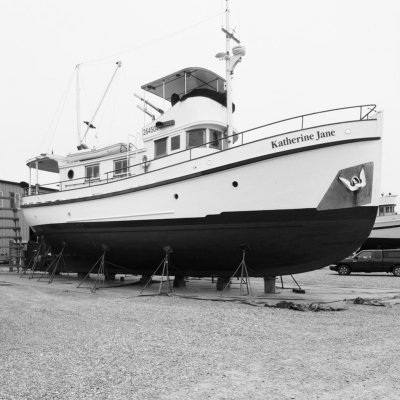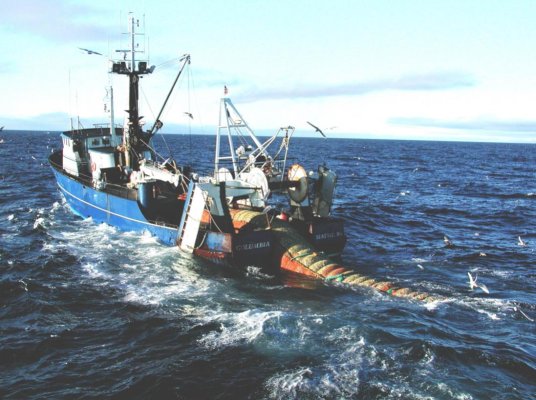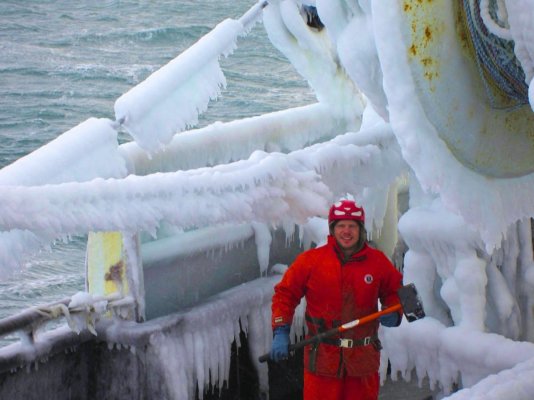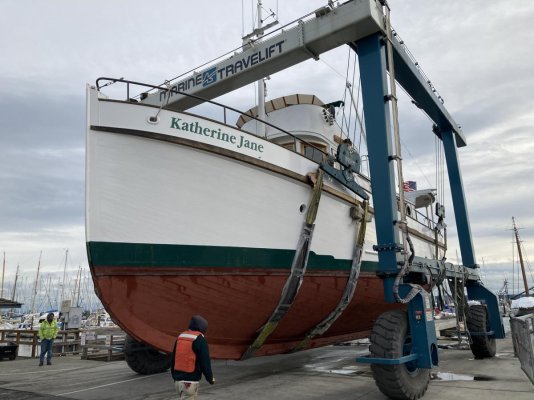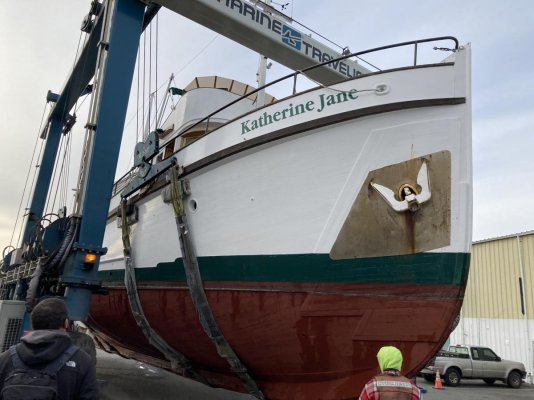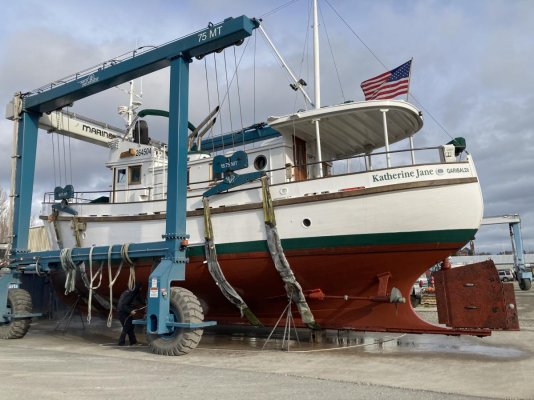I had a Tug boat Capt. tell me once "you guys are nuts, I'd never be a fisherman" I considered myself (a Bering Sea fisherman) a professional, so I ask, "why?" "You head out empty, you load your cargo at sea, in insane conditions, do you know your stability changes in a heart beat."
It's rare, but I handle my boat wrong, we lay over or roll over. Stacking crab pots, fish bags above deck, slack tanks, ice build up. Its a constant vigilance kinda thing.
Our yachts are a different animal. More of "load at the dock" so stability only changes on you if you load high, take on water, or get smashed up by waves.
So this long explanation, I referred to an unstable boat, is most likely to founder if its down swell.
So many variables;
Going straight into it is very stable w my boat. More stable than Katherine J because Willy has a bigger rudder (relative to her size) and can correct much faster.
I would respectfully disagree Nomad. A fast or bigger rudder may help hide a hull shape that is cranky. If your boat fights the autopilot in flat water it's usually not the auto pilots fault. The boat is cranky, like a frisky horse that needs more reins. I've only had my 68 year old boat in flat water, the rudder had been modified many times I suspect, it barley bumps a degree to hold course with no wind in the sound. I anticipate it is sized and configured right, base on all the money spent on this vessel..

Accident are a string of events that culminate in disaster. Eliminate any one of those things, you break the chain, and avert a bad day. Thats our job, to not just survive but thrive.
If a boat can't hold it's head up in big wind, it may too high sided, canvased like a sail on the third floor back to the stern, too low powered, pitching dipping bow, too heavy up front with accommodations, small rudder..leaking front windows, whatever. Go out and maneuver in protected water in 30+ kts. Better at 50. How does it respond? Do you drift sideways? Lay over with a shallow fast bottom? Unable to round up? It's a really good thing to know. Just in case.
My apologies, my work boat life does bleed over.
150 tons pure Wild Alaska Pollack. 123' 1800 HP steel trawler, Bering Sea.
View attachment 111653
This is unsafe levels of ice build up, we got caught offshore, it was to rough to work on deck. So we built a lot of this ice trying to seek shelter. we developed a nasty list on the windy side. 12 hours of pounding and shoveling tons of ice got us back on our feet. February Aleutian Islands
View attachment 111654

